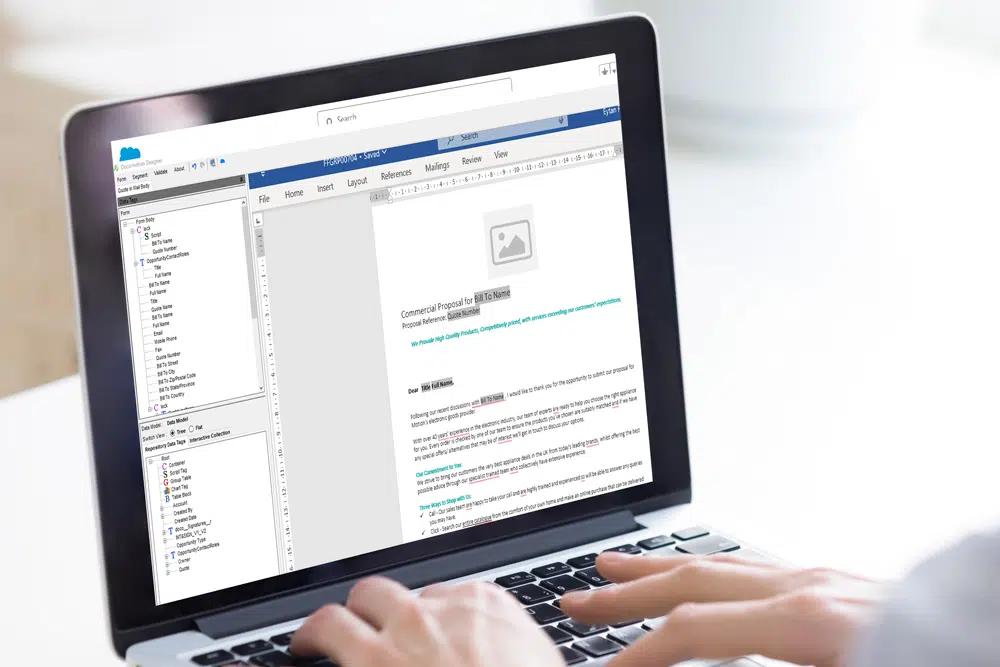If you’re already using Docomotion to generate documents from Salesforce, read this blog to find out how to make your work even easier.
Here are our top 5 tips for designing and editing forms in Docomotion.
1. Main Object & Data Models
Before beginning to create a document in Docomotion, ask yourself the following:
- What is the purpose of the form you want to create?
- From which object will the form will be generated?
- What are the relevant fields that should appear in the form?
- Does the document need to be signed / update Salesforce’s fields by the end user?
Once you have mapped and defined the process, enter the Docomotion app, select the ‘form’ object, create a new form and carry out these three steps:
- Create a data model
- Edit the form in Docomotion Designer and save it
- Change the form status by clicking on ‘Activate’
Note: when using data models, you create the data structure, including the relevant fields and their context, that will be used later when you come to edit the document in Docomotion Designer.
You can create individual data models for each form, or one single data model that will work for multiple forms that are to have identical properties. Take some time to think carefully about which option best suits your purpose – it will save you time later.
2. Designing Documents
As with the data model stage, it pays to stop and plan how you’re going to achieve your end goal, before launching in to design your document. As a guide, consider the following questions:
About the form building process:
- What type(s) of document do you plan to generate – quotes, invoices, proposals etc.?
- If your document includes interactive fields or e-signature, choose link channel.
- Which format would you like your document to be in – HTML5, PDF, Docx or eMail body?
- Will you be using footnotes?
- Are the page margins set as required?
- Do you want to create fields specific to the client receiving the document?
About the design:
- Does your document require pages to be styled differently – for example, is there pages with a different layout? Are their different sections that require their own layout?
- What colors, font and font size are you going to use?
- What is the appropriate setting for line spacing?
3. Page borders
One of the most important tips we can give Docomotion users who are editing forms for the first time relates to setting page boundaries. By defining the borders of your page correctly, and where desired customizing it to specific requirements, the form text will appear in the correct proportions, significantly enhancing its appearance. To do this, simply click on the ‘Layout’ tab and select the category ‘Page Setup’ (with the little arrow) and you will have access to the different page setting options.
4. Page breaks
There are two ways to create a new page without changing the document’s header and footer. Place the cursor at the point where the break should appear and then either:
- Click on Layout> Breaks> Page> Insert> Page Break; or
- Simply press Ctrl + Enter.
We highly recommend you choose one of these two options rather than repeatedly pressing Enter until you reach the next page, which can disrupt the flow of the text and create unnecessary spaces in the final output.
5. Tables
One of the most effective ways to organized and maintain text in the form, is to use a transparent table, which will not be visible in the final form. Using a table also makes editing easier.
In order to see the transparent tables while you work on the form, you need to select the table, click the Layout tab and then select View Gridlines. This will show the borders of the table so you can edit them – but don’t worry, they won’t be displayed in the final output.
Another tip that will save you having to check that your column widths are the same size, is to mark the relevant columns and click on Distribute Columns under the Layout tab.




